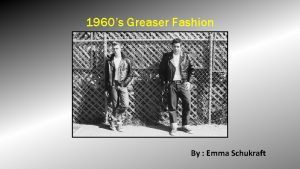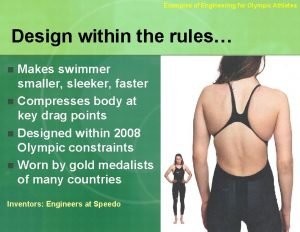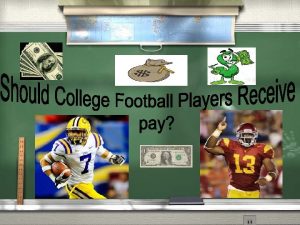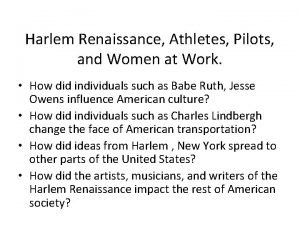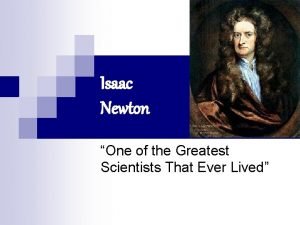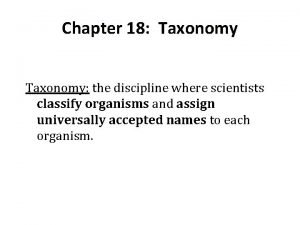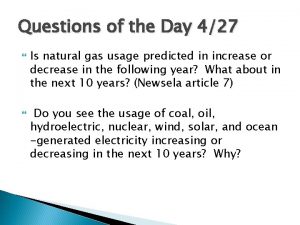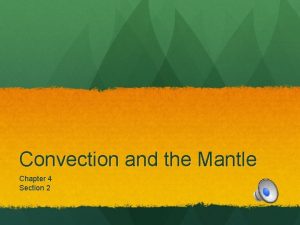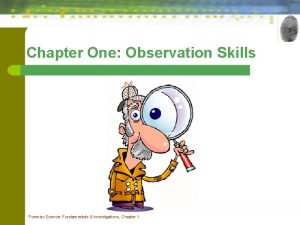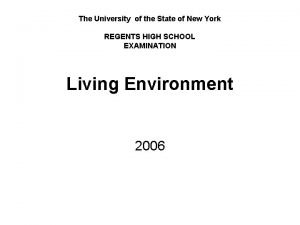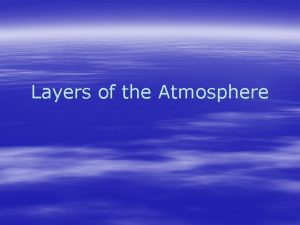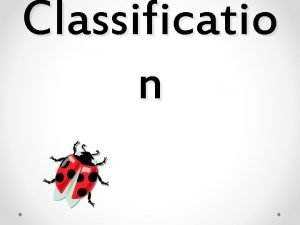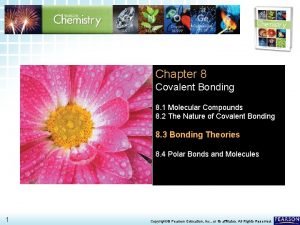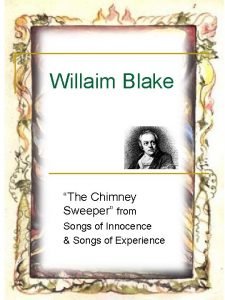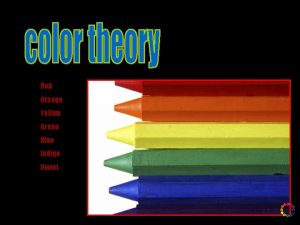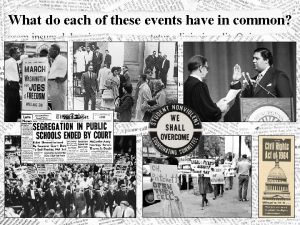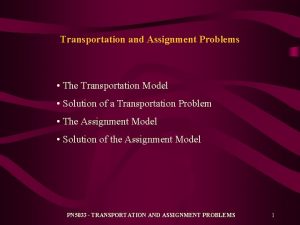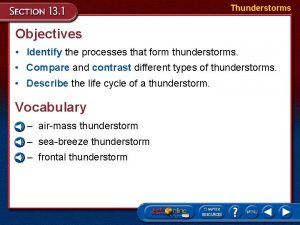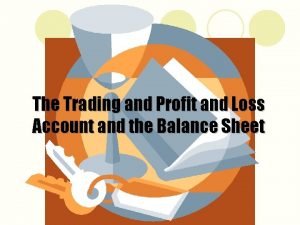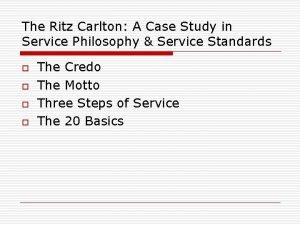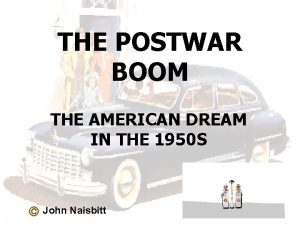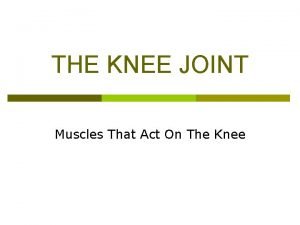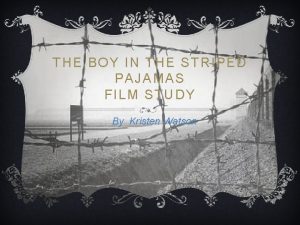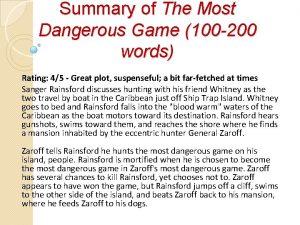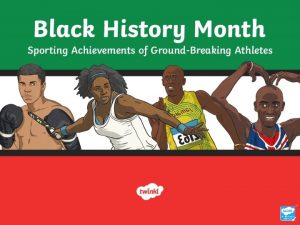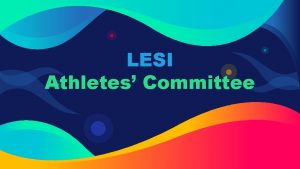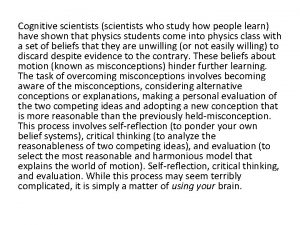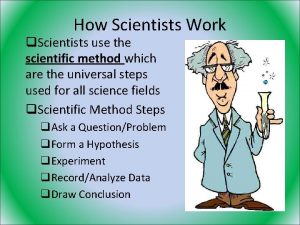Scientists Athletes and Entertainers Scientists Athletes and Entertainers







































































































- Slides: 103

Scientists, Athletes, and Entertainers

Scientists, Athletes, and Entertainers n n n Scientists Athletes Entertainers

Scientists n African American scientists—chemists, biologists, inventors, engineers, and mathematicians, to name a few—have long been contributing to the advancement of science. The following profiles provide information on some African Americans who have had a tremendous impact on the scientific world.

Scientists n n n n George Washington Carver Elijah Mc. Coy Garrett Augustus Morgan Madame C. J. Walker Katherine G. Johnson Lewis Howard Latimer Granville T. Woods

George Washington Carver 1865– 1943 n George Washington Carver was a great agricultural scientist and teacher.

George Washington Carver n n After Carver received both a Bachelor and Master degree in science, he joined the staff of Tuskegee Institute. Carver researched agricultural goods to create useful products. For example, he developed 325 different products from peanuts, 75 different products from pecans, and 108 applications for sweet potatoes.

George Washington Carver n n Carver also developed products for industrial applications using agricultural goods. These included a rubber substitute and over 500 dyes and pigments derived from 28 different plants. For his lifelong achievements, Carver received the Spingarn Medal in 1923 from the National Association for the Advancement of Colored People.

Elijah Mc. Coy 1844– 1929 n n Elijah Mc. Coy was born in Canada to parents who had escaped from slavery in Kentucky. He studied mechanical engineering in Scotland. As an engineer for the Michigan Central Railroad, he worked as a fireman and oilman in charge of lubricating axles and bearings. Railroad engineer oiling up before the start. Library of Congress, Prints & Photographs Division, Detroit Publishing Company Collection, [reproduction number, e. g. , LC-D 4 -10865]

Elijah Mc. Coy n n Trains had to make frequent stops so oilmen could tend to them to keep them operating well. In 1872, Mc. Coy invented an automatic oil cup that continually oiled moving parts, increasing the speed and efficiency of trains. Versions of the oil cup were used in steam engines, naval vessels, oil-drilling rigs, mining equipment, and factories.

Elijah Mc. Coy n Mc. Coy’s oil cup was so popular that many copied its design. In fact, this may be the source of the phrase “The Real Mc. Coy, ” as engineers asked if their machines included the original Mc. Coy design.

Garrett Augustus Morgan 1877– 1963 n By the 1920 s, the streets were filled with both traffic and pedestrians. In 1923, Garrett Augustus Morgan invented the first traffic light in an effort to curb the problem of overcrowded, chaotic streets. Crowded street, Detroit, Michigan Library of Congress, Prints & Photographs Division, Detroit Publishing Company Collection, [reproduction number, e. g. , LC-D 4 -10865]

Garrett Augustus Morgan n n Morgan’s invention used signs instead of lights to guide traffic and pedestrians. The machine worked by raising one sign while lowering the other so that pedestrians and vehicle operators knew when to proceed. Morgan sold his invention to the General Electric Company for $40, 000. He acquired patents in both England Canada for similar devices.

Garrett Augustus Morgan n Morgan invented other devices for public safety, including a firefighter’s helmet. He also invented a gas mask in 1912, which was used in World War I to protect soldiers from gas attacks. In 1916, Morgan used the mask himself to rescue men trapped by a gas explosion in a tunnel near Lake Erie. Morgan received a gold medal from the city of Cleveland, Ohio, for his heroism.

Madame C. J. Walker 1867– 1919 n n Some inventors create products so popular that they make the inventor very wealthy. Such was the case with Sarah Breedlove Walker, one of the first American women of any race to become a millionaire through her own business venture. Known as Madame Walker, she began a cosmetics business in 1905. She developed her own shampoo and hair softener and used heated combs to give hair a shining smoothness.

Madame C. J. Walker n n Madame Walker came from very poor circumstances. She was born in a cabin of a cotton field plantation in Louisiana and worked for 18 years as a laundress. At first, Madame Walker peddled her business door to door. She was so successful that she hired other salespeople. Eventually she marketed sixteen products and established offices in Denver, Pittsburgh, and Indianapolis.

Madame C. J. Walker n n In 1919, Madame Walker claimed to have some 20, 000 agents working for her and selling her product. She gave generously to many charities and organizations, including the NAACP and the YMCA.

Katherine G. Johnson 1918– n n A native West Virginian, Johnson attended West Virginia State College. Her efforts over the years earned her the Outstanding Alumnus of the Year Award in 1999. Johnson worked as an Aerospace Technologist for the National Aeronautics and Space Administration (NASA).

Katherine G. Johnson n n Johnson’s scientific efforts have added greatly to space travel. Her work for NASA included tracking manned and unmanned orbital missions. She also analyzed data gathered by the Apollo moon missions. Johnson pioneered work in the field of navigational problems. She has also investigated the challenges posed by interplanetary trajectories and orbits of spacecraft.

Lewis Howard Latimer 1848– 1928 n n n Many of the items we use today are results of Lewis Howard Latimer’s inventive efforts. For example, in 1874 he patented a toilet system for railroad cars. He also prepared the mechanical drawings for Alexander Graham Bell’s telephone design.

Lewis Howard Latimer n n n In 1881, using Edison’s light bulb design, Latimer developed a carbon filament for light bulbs. In 1882, Latimer patented an improved method of making carbon filaments and created the threaded socket, which is still found in the light bulbs used today. Because of this work, he supervised the installation of public electric lights throughout New York, Philadelphia, Montreal, and London.

Lewis Howard Latimer n n Latimer also invented the forerunner to our modern air conditioner. Perhaps his most distinguished accomplishment was being the sole African American member of the Edison Pioneers, Thomas Edison’s elite research team. During his time with the team, he continued his distinguished career.

Lewis Howard Latimer n n While working for Thomas Edison, Latimer wrote Incandescent Electric Lighting, the first engineering handbook on lighting systems. His work helped to make possible the widespread use of electric lights.

Granville T. Woods 1856– 1910 n Some inventors come from humble circumstances and have little formal education. Granville Woods attended school only until age 10.

Granville T. Woods n n Before becoming an inventor, Woods held many jobs that helped to hone his creativity. He was a fireman, a railroad engineer, and a chief engineer aboard a steamboat. His other experiences included working in a mill and in a machine shop. Among his many inventions are fifteen appliances for electric railways. One was an improved steam boiler furnace developed in 1884.

Granville T. Woods n His designs were very popular. He sold many of his ideas to General Electric, Westinghouse, and American Bell Telephone Company.

Granville T. Woods n In 1888, he developed an overhead electric conducting line for railroads. This helped develop the modern overhead railroad system found in many cities today. Woods also invented the Synchronous Multiplex Railway Telegraph. This device allowed trains to communicate with each other while in transit, which prevented accidents and collisions.

Athletes n African Americans have made great accomplishments and had great successes in sports during the twentieth century. Some have had to overcome great obstacles, such as racism or physical limitations.

Athletes n n n Jesse Owens Joe Louis Jackie Robinson Wilma Rudolph Hank Aaron Muhammad Ali n n n Walter Payton Jackie Joyner-Kersee Michael Jordan Tiger Woods Serena and Venus Williams

Jesse Owens n n Jesse Owens was one of the greatest African American pioneers in sports. Owens worked three jobs to pay for his college tuition while running on the track and field team at the Ohio State University in the early 1930 s. While traveling with the team, he was often refused service at restaurants. Rather than becoming frustrated by this treatment, Owens used these incidents to build his motivation, working harder to prove himself.

Jesse Owens n One particular event shows his amazing endurance. Shortly before the Big Ten Championship games in 1935, Owens injured his back. He participated despite the injury, and in less than one hour he had set new world records in four different running events.

Jesse Owens n n Owens’s crowning achievement occurred during the 1936 Olympic Games held in Nazi Germany. Hitler hosted the games, hoping to promote the superiority of the Aryan race. He was sorely disappointed. Owens won four gold medals in the 100 - and 200 - meter dashes, the long jump (setting a world record in the process), and the 400 - meter relay.

Jesse Owens n Three American presidents lauded Owens’s personal and professional achievements. President Gerald R. Ford awarded Owens the country’s highest civilian honor, the Medal of Freedom, in ceremonies at the White House in 1976. In February 1979, President Jimmy Carter presented him with the Living Legend Award. In 1990, President George H. Bush honored Jesse Owens with the Congressional Gold Medal, presented to his widow, Ruth S. Owens.

Jesse Owens n Upon learning of Owens’s death on March 31, 1980, President Carter paid one last tribute to him with these words: "Perhaps no athlete better symbolized the human struggle against tyranny, poverty, and racial bigotry. His personal triumphs as a worldclass athlete and record holder were the prelude to a career devoted to helping others. His work with young athletes, as an unofficial ambassador overseas, and a spokesman for freedom are a rich legacy to his fellow Americans. "

Joe Louis n n At a time when African Americans were prohibited from participating in many sports, Joe Louis mirrored Owens’s success. Louis became a professional boxer in 1934, winning his first professional fight by a knockout. He went on to win the next 26 fights.

Joe Louis n In 1936, Louis fought Max Schmeling, a German boxer. This fight came to symbolize the strength of Nazi Germany against the democratic United States. When he lost the bout, Louis gave the Nazis reason to feel superior.

Joe Louis n n n Louis did not give up fighting. In 1937, he won the heavyweight championship. In 1938, he had a rematch against Schmeling. Even more so than their previous match, this contest pitted the ideals of Germany against the United States. Just as Owens had done in the Olympics, Louis humiliated both Hitler and Germany by knocking out Schmeling in only one round.

Joe Louis n n Louis became a national legend an instant hero to people of all races in the United States. His victory helped him to bridge the racial gap. Louis held the heavyweight title from 1937 to 1949, the longest reign of any heavyweight boxer. During this period, he successfully defended the title against 25 challengers.

Jackie Robinson n While Louis and Owens became national celebrities, none had a greater impact on opportunities for African American athletes than Jackie Robinson.

Jackie Robinson n Robinson competed in a professional sport that hadn’t allowed African American entry in decades: baseball. He excelled at many sports, including basketball, football, and track. In 1945, after serving in the army, Robinson signed on to play minor league baseball.

Jackie Robinson n n Robinson began playing in the Negro American League, but scouts soon took notice of his talent. He was recruited to the minor leagues by the Royals in Montréal.

Jackie Robinson n n In 1947, after only one season in league, he joined the Brooklyn Dodgers to become the first African American to play modern major league baseball. Remarkably, that was a year before the military was desegregated. The Supreme Court of the United States would not desegregate schools until 1954.

Jackie Robinson n n Robinson learned great self-control in the early years of his game. He endured death threats, hate letters, and unsportsmanlike actions by opposing teams. His talent and self-control earned the respect of his team and eventually the nation.

Jackie Robinson n n Robinson’s career batting average was an exceptional. 311. He excelled at driving other runners home and at stealing bases. In 1962, during his first year of eligibility, Robinson was voted into the Baseball Hall of Fame.

Wilma Rudolph n n While male African Americans made headway in sports during the 1930 s and 1940 s, there were fewer opportunities for women. Most popular sports at the time were established for male players. However, track and field was one area in which African American women were able to participate— and excel.

Wilma Rudolph n n One of the most notable stars of the sport was Wilma Rudolph. Born prematurely in 1940, by age four she had contracted polio. She lost the use of her left leg and had to wear a leg brace to walk. Rudolph suffered through years of illnesses, such as the measles and whooping cough. Eventually, she grew strong enough to discard her leg brace. She soon aspired to play basketball.

Wilma Rudolph n n She became a star player on her high school team and once scored 49 points in one game. But it was her speed that gained her international fame. During the 1960 Olympics, she won the bronze medal in the relay race at age 16.

Wilma Rudolph n n That year, Rudolph ran so fast that she became the first American woman to win 3 gold medals in one Olympics: the 100 - and 200 - meter dashes and the 400 -meter relay, for which she ran in the anchor position. She set a world record for the 200 -meter dash. As the team traveled throughout the world to compete in other events, Rudolph became increasingly popular. Fans flocked to watch her run.

Wilma Rudolph n Rudolph received numerous honors, including many for which she was the first female recipient. Her celebrity status helped to break gender barriers in many previously all-male track and field events.

Hank Aaron n Robinson may have paved the way for African Americans to play professional baseball, but he could not completely eliminate racial tensions. Many players had to face difficult times.

Hank Aaron n n Fortunately for Hank Aaron, he was able to face opposition and overcome it. He left high school in 1952 to join the Indianapolis Clowns of the Negro American League. Aaron played for them briefly until being sold to the Braves. In 1953, he was one of the first African American players in the South Atlantic League. He led the league in batting, runs, hits, and runs batted in. Even though he continued to suffer racism, he gained great respect.

Hank Aaron n n Although Aaron was a spectacular player in many areas of the sport, he is best known for his ability to hit the ball. He won two National League batting titles with high averages and assisted his team in winning several pennants.

Hank Aaron n n In the summer of 1973, Aaron faced the greatest racial tension and experienced his most enduring achievement: he was about to beat Babe Ruth’s all-time home run record. Many people were excited by the chance to see a new record set. Others, however, did not approve, and they wrote him threatening letters.

Hank Aaron n n Even so, Hank Aaron rose to the occasion. On April 8, 1974, he hit his 715 th homerun to beat Babe Ruth’s record. When he retired, he had 755 homeruns to his name, a record that still stands for the major leagues.

Muhammad Ali n Boxing, perhaps the most grueling of sports, demands great things of its participants. No other athlete met these challenges the way Muhammad Ali did.

Muhammad Ali n n Born Cassius Clay in 1942, Ali began boxing at age 12, after having his bicycle stolen. The police officer to whom he reported theft invited him to train as a boxer. It was a decision that forever changed his future. While still in high school, Ali won 100 out of 108 amateur matches and six Kentucky and two national Golden Glove championships. In 1960, he won the gold medal for boxing during the Olympic Games in Rome. He was only 18 years old.

Muhammad Ali n n During his Olympic bid, Ali developed his famous ring chatter. He would talk to his opponents during the fight to distract and frustrate them. After the Olympics, Ali turned to professional boxing. By the time he competed for the heavyweight championship in 1964, Ali had captured the attention of the nation.

Muhammad Ali n n However, he was not expected to win the fight against the powerful Sonny Liston. Ali was not the favorite: 43 of 46 sports writers predicted he would lose. Ali stunned them all when he defeated Liston in the seventh round to become the undisputed heavyweight champion.

Muhammad Ali n n Ali surprised the world again soon after the fight by announcing he had converted to Islam and had changed his name to Muhammad Ali. In 1967, he was stripped of his title and boxing license because he had refused to obey the draft to serve in Vietnam. Although Ali declared he was a conscientious objector, his refusal created a great stir. Many were angry with him. He served 3 years in prison until his conviction was overturned.

Muhammad Ali n n Ali soon returned to the ring and reclaimed the heavyweight title. He later lost the title to Leon Spinks. After he defeated Spinks in a rematch, he became the first boxer to hold the title three times. After Ali retired, he was diagnosed with Parkinson’s disease. He did not let the disease stop him. Instead, he became a selfappointed diplomat and political activist. He also worked to help the less fortunate.

Muhammad Ali n In 1996, Ali was honored by being chosen to light the torch during the opening ceremonies of the Olympic Games in Atlanta.

Walter Payton n Football has had many stars and many amazing players. Some have great speed, others possess great tackling ability, still others excel at throwing the ball and directing the field of play.

Walter Payton n One of the most explosive players in football was Walter Payton. He set numerous records and had amazing accomplishments. He held the NFL’s all-time rushing record for almost two decades, and he extended the record to an amazing 16, 726 yards. Payton once ran for 275 yards in one game, a record that lasted 23 years. He missed only 1 game in 13 years of play.

Walter Payton n While in college, Payton scored 464 total points, an NCAA Division II record that lasted 24 years. He rushed, he kicked extra points, and he kicked field goals. His versatility made him a dangerous player.

Walter Payton n n Payton played with every ounce of energy in his body. For all his amazing feats, Payton didn’t want people to remember him for his records or his amazing achievements. Not even his Super Bowl victory was as important to him. Instead, he wanted to be remembered for his constant effort and his willingness always to give the sport his all.

Jackie Joyner-Kersee n Some athletes are great because they perform amazing feats. Like Muhammad Ali, some athletes prove their greatness by repeating their incredible feats over and over again. Jackie Joyner-Kersee did just that.

Jackie Joyner-Kersee n n In 1984, she won the silver medal and in 1988 and 1992 she won the gold medal for the heptathlon at the Olympics. She also won two bronze medals, one in 1992 and one in 1996. All told, she became the most decorated woman in U. S. Olympic track and field history with 6 medals.

Jackie Joyner-Kersee n n Jackie’s success in the event is staggering, considering what the heptathlon involves. The heptathlon features seven different events that measure speed, strength, and stamina. These events include 100 -meter hurdles, high jump, shot put, 200 -meter dash, long jump, javelin throw, and 800 meter race.

Jackie Joyner-Kersee n n Many athletes have risen to prominence from challenging backgrounds. Jackie was no exception. When she was 11 years old, she saw a man gunned down outside her house. Her mother died when she was 18. Still, her parents taught her to respect herself. She worked hard at her given talents, particularly basketball, volleyball, track and field, and her studies. After graduating in the top 10 percent of her high-school class, she received a scholarship to UCLA and earned a B. A. in history.

Jackie Joyner-Kersee n Jackie’s accomplishments include setting the current world record for long jump at 24 feet, 7 inches. She holds the world record for most points earned for the heptathlon (7, 291) and the next five highest scores. She competed on 4 Olympic teams and barely missed the cutoff for the 2000 team.

Michael Jordan n While there have been many exceptional African American basketball players, none is more recognizable than Michael Jordan.

Michael Jordan n n Surprisingly, Jordan’s first years playing basketball were not so remarkable. As a sophomore in high school, he didn’t make the varsity basketball team. That failure inspired him to achieve, however. Any time he thought of giving up, he would remember seeing his name missing from the varsity roster list.

Michael Jordan n n In 1982, as a freshman at North Carolina University, he sunk a 17 -foot shot with 15 seconds left to gain the lead in the NCAA tournament. He would become famous for making such clutch shots time and time again.

Michael Jordan n n During his professional career (beginning in 1985), doubts about his abilities surfaced. For years he would win scoring contests but could not lead his team, the Chicago Bulls, to win the national championship. That changed during the 1990 s when the Bulls won the championship in 1991, 1992, and 1993. Then Jordan surprised the world by retiring from basketball to play professional baseball.

Michael Jordan n n Jordan rejoined the Bulls in 1995 and led them to victory again, winning the NBA championship in 1996, 1997, and 1998. He surprised America again by retiring. As a man of surprises, Jordan had at least one more up his sleeve. After becoming president of basketball operations for the Washington Wizards, he decided his team needed his skills on the court more than in the office. He came out of retirement a second time to play the sport he loves.

Tiger Woods n Throughout its history, the field of golf has been dominated by Caucasians. That is, until the last few years. Almost since his professional debut in 1996, there has been one name synonymous with excellence in golf: Tiger Woods.

Tiger Woods n n Woods’s accomplishments have been impressive. Even before he turned pro, he had won six amateur national titles and a host of other tournaments, including the NCAA title. He won twice in 1996, the year he turned professional. By winning the Masters tournament in 1997, he became the first African American to win a major event.

Tiger Woods n n In 1998, however, he won only 3 tournaments. Some thought he was a one-year sensation. Woods proved them wrong. In 1999, he won 8 times on the PGA tour (the first time anyone had done that since 1974), including the PGA Championship. He beat the previous record for single-year earnings by almost $3 million.

Tiger Woods n n In 2000, Woods became the second golfer in history to win three professional major golf tournaments in one year. He became the youngest golfer—at age 24—to complete a career Grand Slam, winning all four major golf tournaments. Woods won five times on the PGA tour in both 2001 and 2002. He won 8 times overall in 2001 and 7 times overall in 2002.

Tiger Woods n n He won the Sports Illustrated Sportsman of the Year award in both 1996 and 2000, the first person to receive this award twice. With many tournaments to play in 2003 and subsequent years, Woods may set even more records. The unassuming and humble Woods has become a model for all athletes.

Serena and Venus Williams n n Even as Tiger Woods dominates the golf course, the Williams sisters currently are crushing the competition in women’s tennis. Consider this: the last four U. S. Open tournaments and the last three Wimbledon tournaments have been won by one of the sisters. In 2002 rankings, they claimed the number 1 and 2 positions, a first for sisters.

Serena and Venus Williams n n Venus, the elder by a little over a year, began playing professional tennis in 1994. She steadily climbed through the ranks, playing well in tournaments and increasing the power and speed of her serve. In a 1996 tournament, her serve was clocked at 108 mph, the ninth fastest that year. In 1998, she was clocked at a world record 127 mph.

Serena and Venus Williams n In addition to winning both Wimbledon and the U. S. Open in 2000 and 2001, Venus has won numerous matches, including tournaments in Germany and France and the Gold medal at the Sydney Olympics in 2000.

Serena and Venus Williams n n Serena’s professional career began a bit later. Like her sister, she steadily climbed in the ranks, consistently winning or performing well in many tournaments. She has won Faber Grand Prix and the Princess Cup. When she won the U. S. Open in 1999, she was the lowest seed (7) to win in the Open era since 1968 and the second African American woman to win a Grand Slam singles title.

Serena and Venus Williams n n Serena became the seventh woman to win three consecutive Grand Slam titles by winning the French Open, Wimbledon, and the U. S. Open in 2002. One or both of the sisters have defeated most of the major players in tennis, including Davenport, Graf, Hingis, Martinez, and Seles.

Serena and Venus Williams n n These formidable players also are successful in playing doubles tennis together. They won the gold medal in the 2000 Olympics. Other doubles victories include the 2001 Australian Open, the 2000 Wimbledon, and the 1999 U. S. Open.

Entertainers n Just as African Americans have contributed to society in science and sports, they have impacted the world of entertainment as well. The African American comedians and actors that entertain us today can thank performers such as Nat King Cole, Hattie Mc. Daniel, Cicely Tyson, Flip Wilson, Richard Pryor, Sammy Davis, Jr. , and many others who were pioneers in television, film, and entertainment.

Film n Hattie Mc. Daniel, an African American actress and singer, is most remembered for her supporting role of Mammy in the 1939 film Gone with the Wind. This role earned her the honor of becoming the first African American to win an Academy Award.

Film n n In 1963, African American actor Sydney Poitier was awarded the Oscar for Best Actor for his role in Lilies of the Field. Unfortunately, it would be more than 30 years before the next African American actor would take home the Oscar.

Film n In 2002, for the first time in the Academy’s 74 -year history, two African American performers were awarded Oscars for best actor and best actress: Denzel Washington for his role in the film Training Day and actress Halle Berry for her role in Monster’s Ball. Berry’s moving acceptance speech brought to light the disparity in the industry: “This moment is so much bigger than me. It's for every nameless, faceless woman of color that now has a chance because this door tonight has been opened. "

Comedians/Variety Shows n n n In 1956, Nat King Cole became the first African American to host a variety show. It wasn’t until the 1970 s, however, that an African American host would earn high ratings. In 1971, The Flip Wilson Show not only won its time slot, but the show also won two Emmys for Best Variety Show and for Best Writing In A Variety Show.

Comedians/Variety Shows n Another African American comedian and actor was breaking color barriers in the 1970 s, as well. John Elroy Sanford starred in the television sitcom Sanford and Son from 1972 to 1977, earning three consecutive Emmy Award nominations in 1971, 1972, and 1973.

Comedians/Variety Shows n n Long before The Flip Wilson Show and Sanford and Son were making audiences laugh, Sammy Davis, Jr. , was tap dancing his way into mainstream entertainment. Davis debuted in the 1932 short film Rufus for President. His career would span more than half a century. Perhaps his most remembered performances are those with the famous “Rat Pack. ”

Living Legends—Bill Cosby n n Bill Cosby is perhaps one of the most recognizable and successful African American entertainers. Like many, Cosby comes from humble beginnings. Cosby’s high IQ placed him in classes for gifted students, but by the tenth grade his love for sports sidelined his academic promise.

Living Legends—Bill Cosby n n n In 1956, he dropped out of high school and joined the Navy. After serving 4 years in the Navy—where he also earned his GED—Cosby won a track and field scholarship to Temple University. During his sophomore year, Cosby discovered his true calling: telling jokes.

Living Legends—Bill Cosby n n n Cosby’s big break came in 1965, when producer Sheldon Leonard cast him as the lead role in the NBC drama I Spy. He became the first African American to play a leading role in a drama, winning three Emmys. This role set the tone for Cosby’s career: playing successful, educated African Americans in a medium overrun with negative stereotypes.

Living Legends—Bill Cosby n n n Cosby’s other successes—also centered on learning—include Fat Albert and the Cosby Kids and The Electric Company. Despite his success in television, Cosby sought higher education, attending the University of Massachusetts in the 1970 s. In 1977, he earned a Ph. D. in education.

Living Legends—Bill Cosby n n The Cosby Show, a sitcom portraying African Americans in a positive light, debuted in 1984. The show remained in the top 20 until its final episode in 1992. Upon the show’s syndication that same year, Cosby had made more than $300 million dollars.

Living Legends—Bill Cosby n n n Cosby’s success and capitalist instinct made him a very wealthy man. His became one of the most recognizable faces in America, as he became a spokesperson for the Coca-Cola Company, Jell-O, Kodak, Del Monte, and the Ford Motor Company. He and his wife, Camille, are active philanthropists. In 1994, Cosby was inducted into the Academy of Television Arts and Sciences Hall of Fame.

Living Legends—Oprah Winfrey n n Oprah Winfrey survived a rough childhood filled with poverty and abuse to become one of the most successful, wealthiest African American women. Winfrey attended Tennessee State University, where she studied and worked in radio and television broadcasting.

Living Legends—Oprah Winfrey n n In 1976, she moved to Baltimore, Maryland, to host the television talk show People Are Talking. After propelling the show to success, Winfrey moved onto bigger things after eight years. Winfrey’s second show, A. M. Chicago, found similar, if not quicker success, surpassing Phil Donahue in the ratings within months.

Living Legends—Oprah Winfrey n n n In 1986, the Oprah Winfrey Show launched. The show aired on 120 channels and was watched by more than 10 million people. Winfrey made more than $30 million during the show’s successful first year. She purchased the show from ABC for her own production company, Harpo Productions.

Living Legends—Oprah Winfrey n n Despite her competitors’ focusing on shock factor and questionable content, Winfrey vowed to keep her show clean. She was rewarded with increased ratings. Winfrey’s other accomplishments include a nomination for Best Supporting Actress for her role in the 1985 Steven Spielberg film The Color Purple.

Living Legends—Oprah Winfrey n n In 1999, Winfrey co-founded Oxygen Media, a network for women. In April 2000, O: The Oprah Magazine hit supermarket shelves. In 1994, President Bill Clinton signed into law a bill that Winfrey, an active children’s rights activist, proposed to Congress. In September 2000, Winfrey became the first recipient of the Academy of Television Arts and Sciences’ Bob Hope Humanitarian Award.
 Athletes vs non athletes academic performance
Athletes vs non athletes academic performance 1960 greaser fashion
1960 greaser fashion Chapter 11 managing weight and eating behaviors
Chapter 11 managing weight and eating behaviors Baseball six word memoirs
Baseball six word memoirs All athletes have an innate preference
All athletes have an innate preference Athletes suddenly dying
Athletes suddenly dying Insall salvati ratio
Insall salvati ratio Athletes body engineers
Athletes body engineers Rogue fitness tracking
Rogue fitness tracking Fungi kingdom characteristics
Fungi kingdom characteristics Goal setting theory
Goal setting theory The presence of spectators helps young athletes
The presence of spectators helps young athletes Should college athletes be paid thesis statement
Should college athletes be paid thesis statement Harlem renaissance athletes
Harlem renaissance athletes Gonadotropin
Gonadotropin Sometimes scientists make a mistake or
Sometimes scientists make a mistake or Diagrams tables and graphs are used by scientists mainly to
Diagrams tables and graphs are used by scientists mainly to Scientists recently discovered that rocks collected
Scientists recently discovered that rocks collected How do scientists classify stars
How do scientists classify stars Isaac newton one of the greatest scientists was born
Isaac newton one of the greatest scientists was born Isaac newton is one of the greatest
Isaac newton is one of the greatest Streamlines on a weather map depict
Streamlines on a weather map depict Famous german scientists
Famous german scientists Famous english scientists
Famous english scientists Why do scientists classify organisms?
Why do scientists classify organisms? History of the atom scientists
History of the atom scientists Food scientists measure food energy in:
Food scientists measure food energy in: Significant figures chem
Significant figures chem Newton one of the greatest scientists
Newton one of the greatest scientists How scientists work
How scientists work Famous food scientists
Famous food scientists Famous romanian scientists
Famous romanian scientists Where can scientists obtain stem cells? *
Where can scientists obtain stem cells? * Scientists divide the atmosphere into how many layers?
Scientists divide the atmosphere into how many layers? What important attitudes do scientists possess
What important attitudes do scientists possess Hispanic american scientists
Hispanic american scientists Union of concerned scientists
Union of concerned scientists Scientists think that convection currents flow in earth's *
Scientists think that convection currents flow in earth's * Chapter 1 observation skills answers
Chapter 1 observation skills answers How did scientists understanding of cells develop
How did scientists understanding of cells develop History of physiological psychology
History of physiological psychology What steps do scientists often use to solve problems?
What steps do scientists often use to solve problems? Why do biologists classify
Why do biologists classify Scientists discover how develop brains
Scientists discover how develop brains Scientist hypothesize that cabbage broccoli cauliflower
Scientist hypothesize that cabbage broccoli cauliflower Cell sap
Cell sap I spex
I spex Scientists can from
Scientists can from Human clone
Human clone What are the properties used to classify stars
What are the properties used to classify stars The first layer of the atmosphere
The first layer of the atmosphere F
F How do scientists classify organisms
How do scientists classify organisms How do scientists classify protists
How do scientists classify protists Bond 8 generacji
Bond 8 generacji Purple
Purple And because i am happy and dance and sing
And because i am happy and dance and sing West side story romeo and juliet character comparison
West side story romeo and juliet character comparison Taller younger shorter older
Taller younger shorter older Read and write pesos and centavos in words and symbols
Read and write pesos and centavos in words and symbols Red, orange, yellow, green, blue, indigo, violet
Red, orange, yellow, green, blue, indigo, violet One night a theater sold 548 movie tickets
One night a theater sold 548 movie tickets Analysis of young and dyslexic
Analysis of young and dyslexic Albany movement
Albany movement West yorkshire health and care partnership
West yorkshire health and care partnership Draw and label transverse wave
Draw and label transverse wave Compare and contrast spring tides and neap tides.
Compare and contrast spring tides and neap tides. Dependent variable
Dependent variable Action verbs and linking verbs
Action verbs and linking verbs What are your life roles
What are your life roles Types of records and reports in nursing
Types of records and reports in nursing Transportation and assignment problems and solutions
Transportation and assignment problems and solutions Compare and contrast cold wave and wind chill factor
Compare and contrast cold wave and wind chill factor Final account format
Final account format Lesson preparation siop
Lesson preparation siop Tomorrow and tomorrow creeps
Tomorrow and tomorrow creeps The ritz carlton credo
The ritz carlton credo How were conglomerates and franchises alike and different
How were conglomerates and franchises alike and different Vastus lateralis origin and insertion and action
Vastus lateralis origin and insertion and action Great gatsby questions chapter 3
Great gatsby questions chapter 3 The giver chapter 3 and 4 questions and answers
The giver chapter 3 and 4 questions and answers Expository text structures
Expository text structures Essay about similarities and differences
Essay about similarities and differences Compare and contrast analog and digital forecasts
Compare and contrast analog and digital forecasts Film the boy in the striped pyjamas
Film the boy in the striped pyjamas The blind man and the elephant poem questions
The blind man and the elephant poem questions Airline hub model
Airline hub model Venn diagram of typhoon and tornado
Venn diagram of typhoon and tornado Output design
Output design The most dangerous game plot diagram
The most dangerous game plot diagram Simple and complete subjects and predicates
Simple and complete subjects and predicates Compound inequality and
Compound inequality and What is brazing in welding
What is brazing in welding Summer metaphors and similes
Summer metaphors and similes How do offspring inherit traits
How do offspring inherit traits Separation of powers and checks and balances
Separation of powers and checks and balances Security program and policies principles and practices
Security program and policies principles and practices Local maximum and minimum vs. absolute maximum and minimum
Local maximum and minimum vs. absolute maximum and minimum Megan and ron ate too much and felt sick.
Megan and ron ate too much and felt sick. Rule for rounding numbers
Rule for rounding numbers Love and hate theme
Love and hate theme Protagonist and antagonist in romeo and juliet
Protagonist and antagonist in romeo and juliet Irony in romeo and juliet act 4
Irony in romeo and juliet act 4 Tricky dick: the rise and fall and rise of richard m. nixon
Tricky dick: the rise and fall and rise of richard m. nixon

